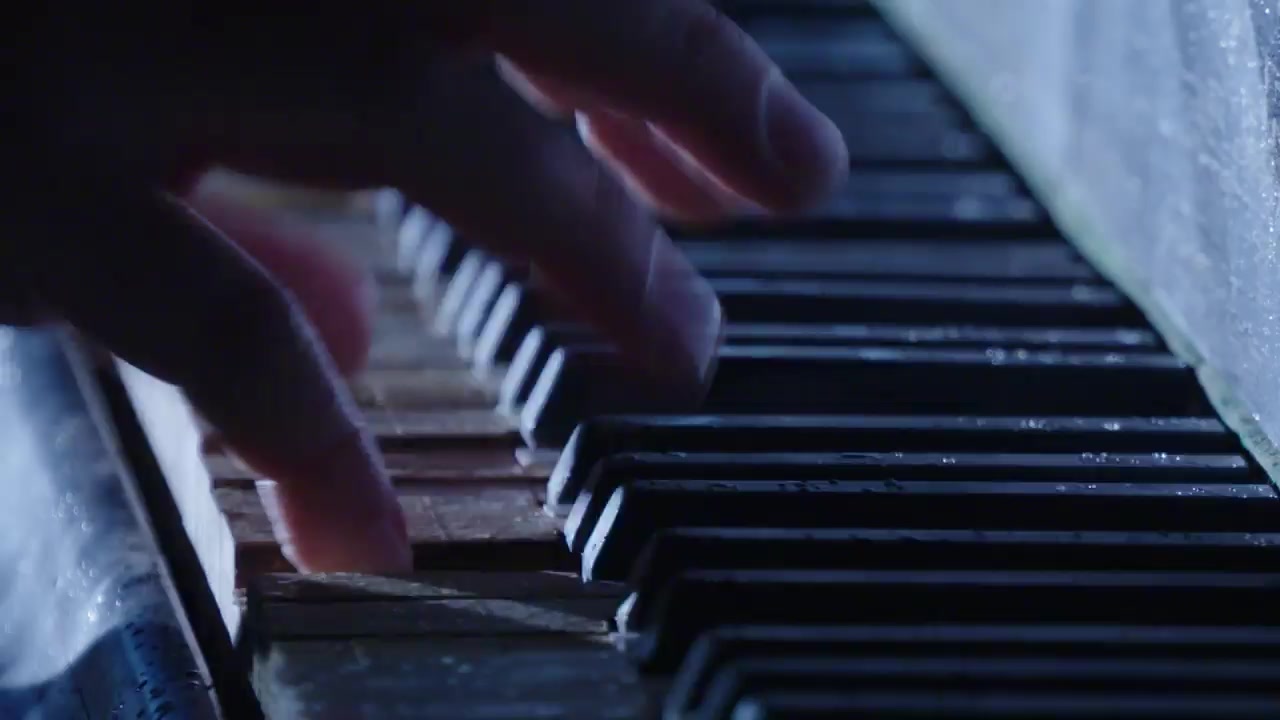
Fiery Farewell
The story of a perfectly ordinary baby grand that got to play with an extraordinary pianist.
This story was originally published in Norwegian. The original version is available here.
– It's nostalgic. We’ve been through a lot together, you know, says the world-famous pianist. He’s dressed like a proper piano player: Black tie, stiff collar, dark, elegant suit.
If we didn’t know better, we’d think he was on his way to a funeral. In a way, he is.
– But I’m not going to start crying, you know. I don’t think so, he says, as he braces himself for a unique performance.
A match is lit. It’ll soon be over. The fellowship between the extraordinary musician and the perfectly ordinary baby grand. They’ve been on the highest peaks and plunged into the depths together. They’ve pushed the envelope for what they thought they could do.
As the celebrated pianist takes a seat on his bench on an open, empty parking lot in Norway’s next largest city, the flames have already started to lap at the ancient instrument.
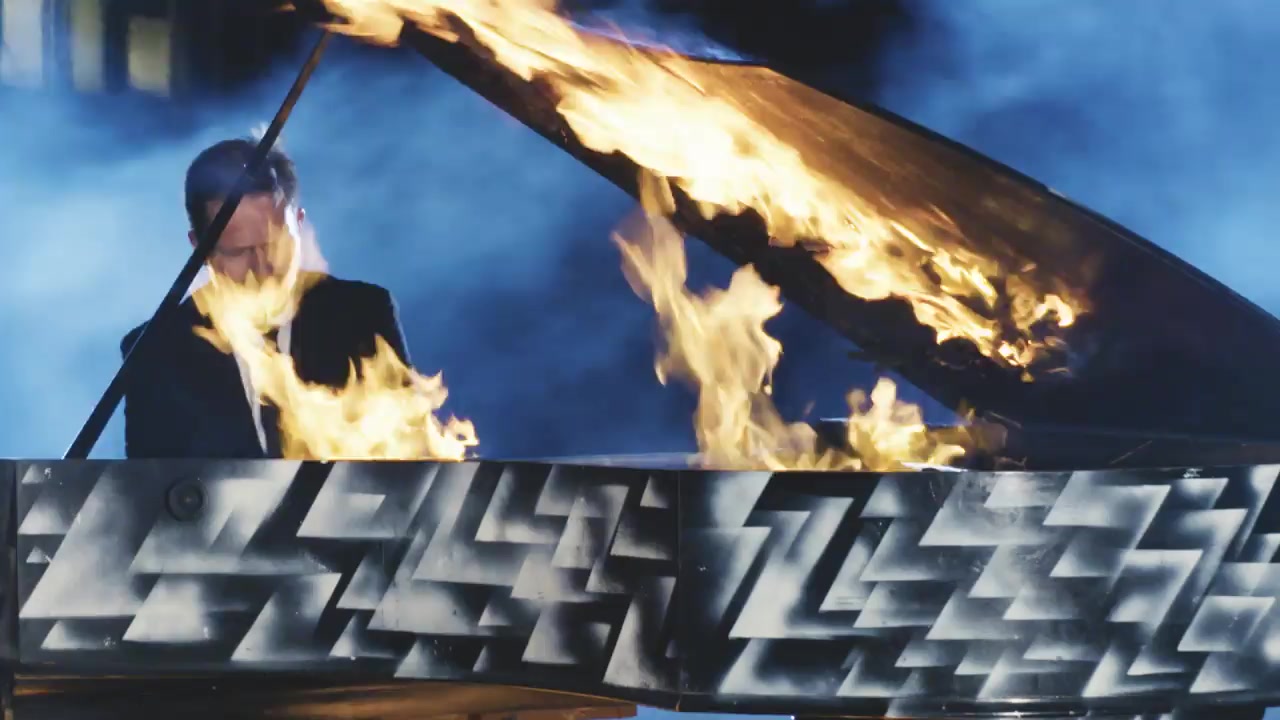
In a German village that no longer exists
One spring day in 1908, on March 5 to be precise, in the German industrial town of Barmen, a grand piano was packed and prepared for departure at the oldest piano factory in the world. It wasn’t a huge, flamboyant concert piano, but a tiny baby grand. Built for intimate plunking in well-to-do homes. Just above the keys, stamped with black letters on a golden background, it bore the number that made it possible to trace its origin: IBACH 55834.

No. 55834: Many years after the baby grand was built in Barmen in Germany, it was restored to its former glory in a workshop in Bergen.
Foto: Sølve RydlandIts first journey took it to the east, via Berlin to Posen, which at the time was in Germany. The price was 1750 marks.
It was 98 years later, in 2006, that we encountered the baby grand again. This time in a completely different part of Europe. In a hotel lobby by Bergen’s historic waterfront, in an area known as Germany Pier when the piano was new. We can only speculate where the grand piano had been in the meantime. The size of the piano means that we can assume that it’s hardly seen the greatest concert halls. More probably it’s spent its days in a smaller community hall, a private home or possibly a continental cafe.
At some point, the baby brand was taken north. Where it went, and which detours it took, is impossible to tell.
Much has happened since the piano, shining and brand new, embarked on its first journey. Europe has lived through two world wars and emerged as a completely different continent. Barmen, the town where the piano builder created the baby grand, has been swallowed by its larger neighbour, and is today part of Wuppertal. Posen became Poznan, and is now in Poland. The baby grand had been stripped of pride, honour, strings and keys. Its insides had been gutted and replaced by an electronic keyboard. It’s sad, even for a perfectly ordinary piano, to be relegated to reeling off bland, electronic lobby music in a sleepy hotel in a far corner of Europe.
On the edge of the cliff
It was at this point the celebrated pianist entered the picture. In the summer of 2007, he was to perform the piece Edward Grieg never played in public: his Ballad in G minor. NRK was going to document the process. The program producers had convinced the pianist to play the grand finale on top of the Rossnos mountain in Odda. While hunting for a suitable piano for the job, NRK stumbled across the gutted baby grand in the hotel lobby.

AIRY: Way up in the sky, with the Folgefonna glacier in the background, the baby grand is airlifted to the top of Rossnos above Odda.
Foto: NRKIn a piano workshop in Bergen, the baby grand was given a new lease of life. An original acoustic keyboard was mounted into the old cabinet. In its evening years, the piano would shine, and even reach new pinnacles.
No matter what the baby grand had done in its previous life, we dare say that what followed would probably be the most exotic. At the very start of the Hardanger Fjord, where national romanticism clashes with industrialism, the then 99-year-old baby grand was hoisted from a truck.

GRAND AHOY: The pianist helps ease den baby grand down on the mountaintop.
Foto: NRKA helicopter arrived. Straps were fastened. At the top of the mountain, 1401 metres above Odda, the smelting plants and the blue Sørfjorden, the star pianist stood ready to receive it. Dressed in a dark suit appropriate for a performer of his calibre.
Its tiny wheels, made to stand on oak parquet and oriental carpets, were steadied with small granite rocks and flagstones. At the very edge, above the vertical cliff and the scree sweeping down into the fjord far below.
Then the pianist sat down on his bench. He had spent a long time bracing himself for this assignment. And played the piece that was too close and personal for the great composer. The TV viewers saw and heard how Grieg’s Ballad in G minor echoed across the spectacular landscape. With mountains, glaciers and the blue fjord as his live audience.
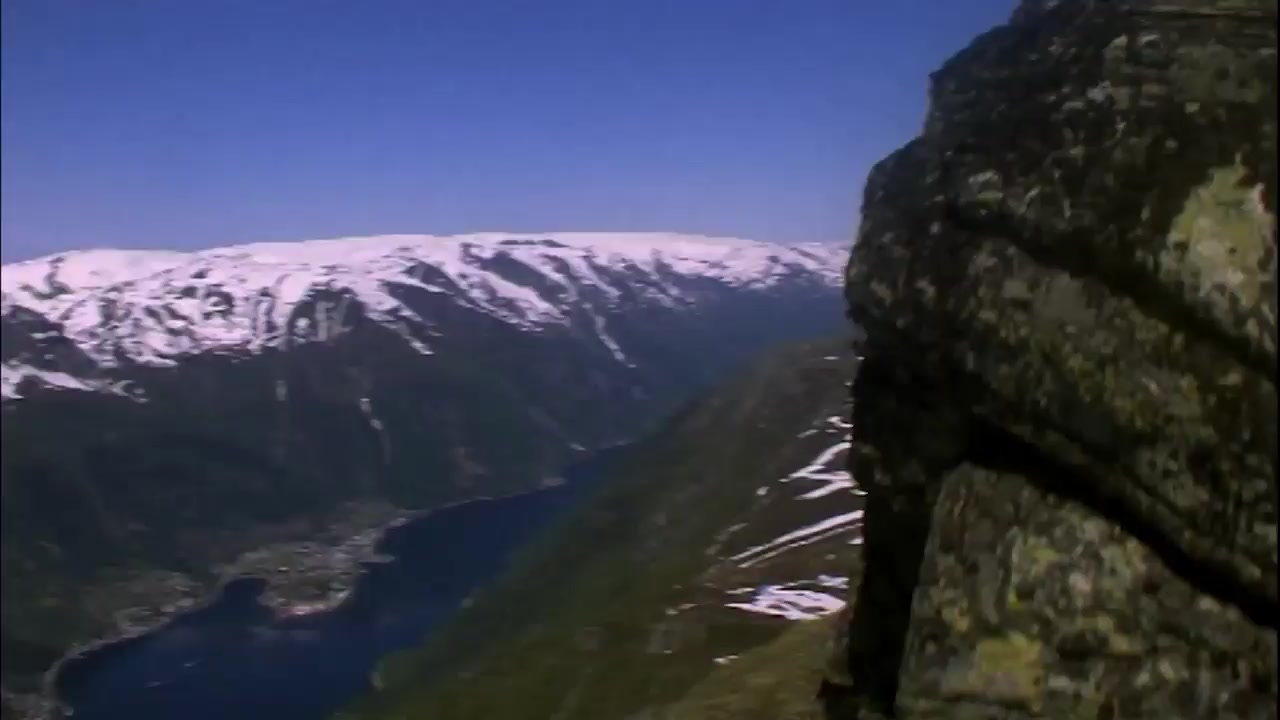
The images of the baby grand and the great pianist on the mountaintop travelled the globe. People in the Barmen quarter in Wuppertal settled into their chairs with the major German newspaper Die Zeit to read about the baby grand that had rolled out of the gates of the town’s piano factory almost a century ago. They weren’t the only ones to hear about it. In Finland, the Netherlands, Great Britain and elsewhere in Europe, newspaper readers were captivated by the image of the grand piano on the mountaintop.
The baby grand had done its duty as a prop for the famous pianist and NRK’s program producers. When the helicopter returned and hoisted the piano back into the air, someone cruelly suggested:
“What if we just dump the piano in the fjord?”
“Too much paperwork”, the pilot grumbled.
It never happened, but it’s worth mentioning as a hint of what the piano had in store.
Killing a darling
All artists make a living pushing the envelope, but for the world-famous pianist, there was a red line. Could he really be an accomplice to destroying an instrument? He who lived in search of the perfect chemistry between fingers, black and white keys, strings, rhythm and resonance? Who tried to make the instrument an extension of his very self? The thought was unsettling. What in the world had he got himself into now?
The pianist had embarked on a joint project with a South African artist. One who lived to shock and enrage in the grey area between video and street art. His vision was clear: Kill the piano! They were going to execute the baby grand while the pianist sat on his bench and squeezed out the final notes. Hanging and shooting had been on the table, but discarded. They settled for drowning.
Way up in the air above Laksevåg in Bergen. Hanging by a wire one day in March 2009. This time from a crane. Our friend the baby grand was lowered into the monumental dry dock of stone and steel.

GANGING UP: The South African video artist Robin Rhode and Leif Ove Andsnes plan to murder the piano together.
Foto: NRK / Tore ZakariassenFar above, the dockworkers stood with their helmets, wrapped sandwiches and coffee cups, wondering what the heck was going on. This wasn’t your everyday hull being lowered into the dock. But a perfectly ordinary baby grand built in a tiny German town more than a century ago. It was strapped to the concrete at the very bottom of the dry dock.
The floodgates were opened. Sea water poured in. The pianist took his seat, and played Mussorgsky’s “Pictures at an Exhibition”, accompanied by the foaming water that just kept rising.
Countless cameras mounted by the South African artist captured the waves of water that slowly but surely crept up the frail legs of the baby grand.
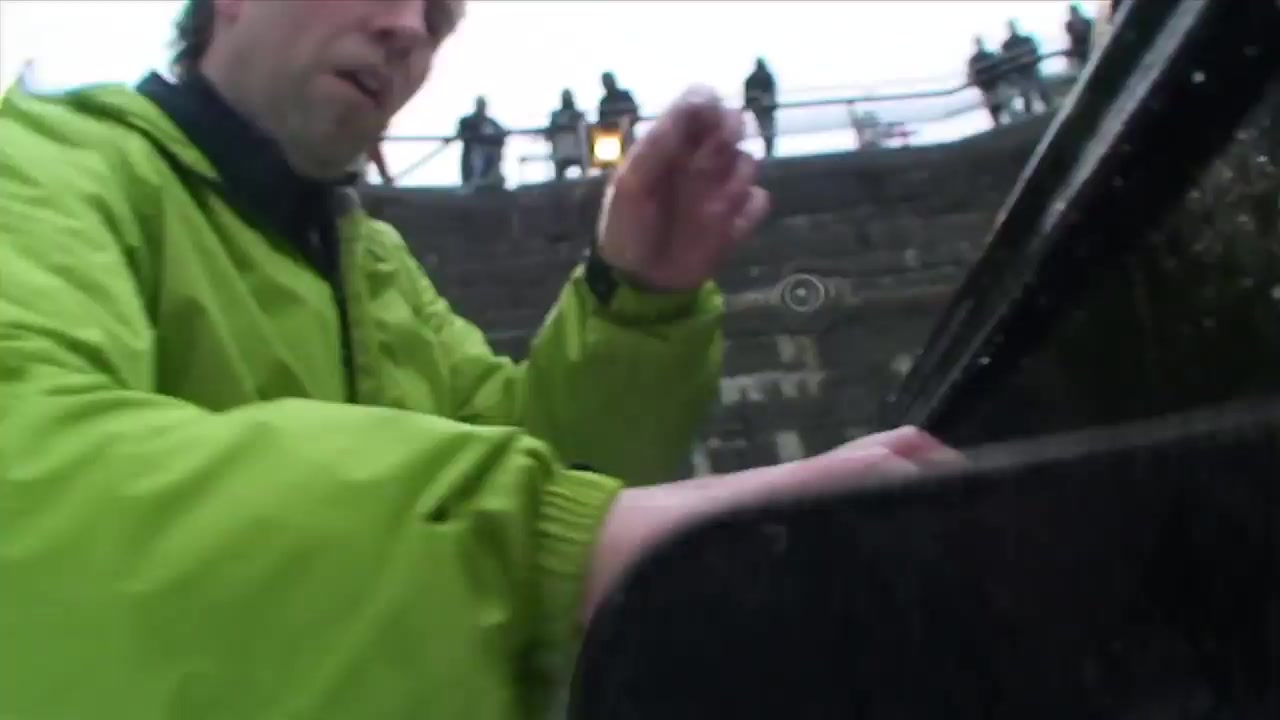
When all hope was lost, the star pianist was hauled out of the water. But it didn’t stop rising. The baby grand began to disappear, becoming increasingly enveloped by water. As a final exit, al fine, the prop stick holding the lid came loose. The lid, which had towered like a shark fin above the turbulent water, came down, and the baby grand disappeared in the white foam.
The shouts of the South African street artist resonated across the bay:
“Die! Die!”
The musician and the artist had every reason to be pleased by what they had achieved. The baby grand was left chained to the bottom of the dock.
It was left to a diver to release the ageing piano from its chains. But then, maybe not by a miracle, but certainly with biblical undertones, the baby grand began to rise up through the water, toward the cold light that seeped through the low clouds above Puddefjorden. Like a bob popping up when the salmon slips free of the hook, the piano broke through the surface.
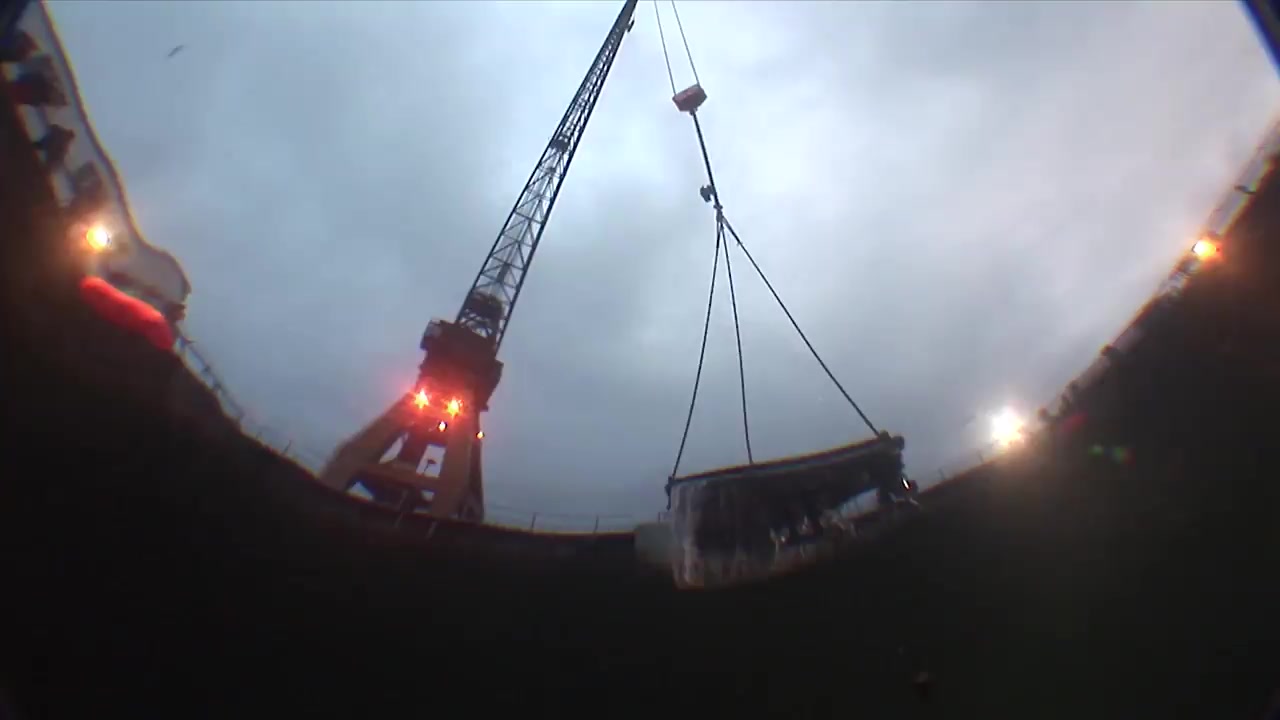
Even though the baby grand would never be the same, it wouldn’t give up. The brave little piano had still not reached the end of the road.
Stowed away in a warehouse
The street artist and the pianist weren’t done with the baby grand either. Their project was about using the footage of the drowning piano as video scenery on a concert tour. Broken and soggy, it was once again hoisted aboard a truck. This time to head south, to Risør and the town’s chamber music festival for the opening concert of the tour.
And the edge of the pier in the picturesque town, to the sound of waves lapping in the background, the street artist once again attacked the baby grand. With his signature spray can, he transformed the once polished black surface into a zigzag of black and white.
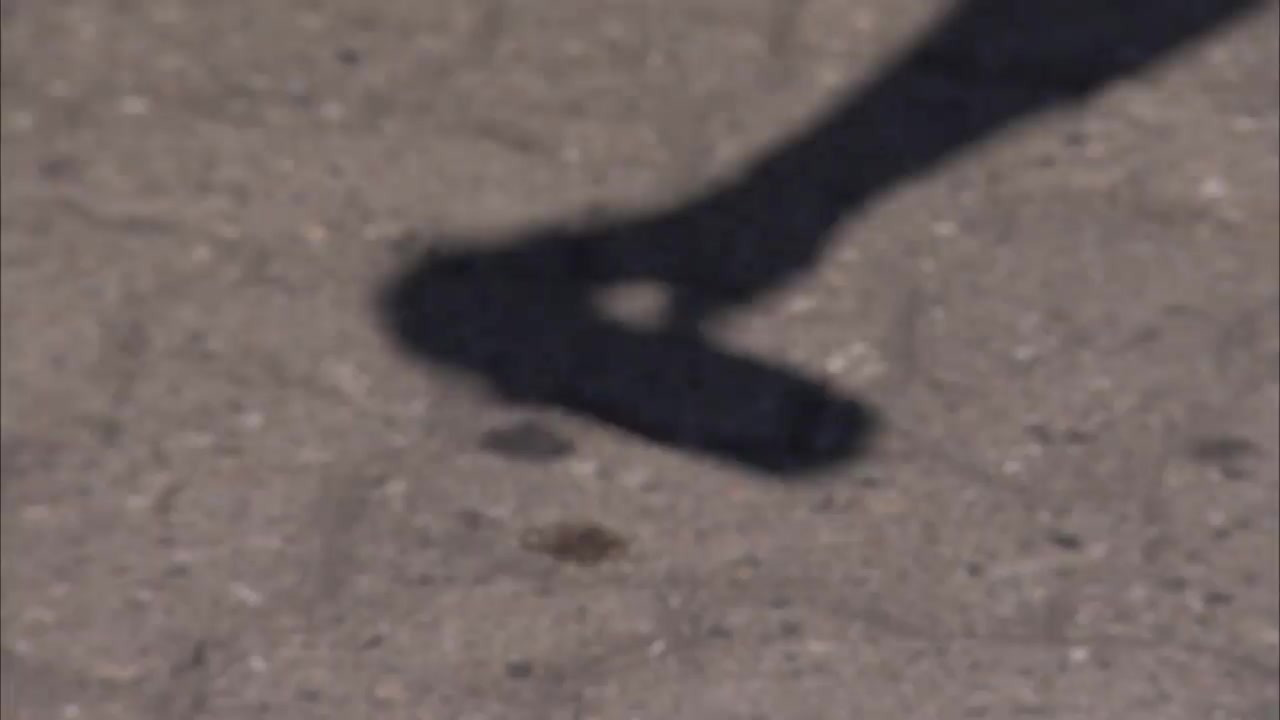
The pianist toured the world with his performance of “Pictures at an Exhibition”, using the video of the drowning piano as his backdrop.

ON STAGE: The drowning baby grand became an integral part of Andsnes’ tour with “Pictures at an Exhibition” by Modest Mussorgsky.
Foto: NRKMany had grown fond of the baby grand. Some even started calling it by name: Mister Pianoforte. But who has any use for a tortured and tormented piano? Saltwater, mountain air and spray paint does vicious things with a wood and metal instrument. It languished in a warehouse, its ivory keys cracking and chipping, its once bright surface growing more and more dull.
Fiery farewell
But last autumn someone spotted the perfectly ordinary baby grand once more. It was clean-up time in NRK’s warehouse. Standing on edge, held together by straps, the piano had been gathering dust. Nobody had any need for the baby grand any longer.
But the pianist and the program producers still wanted to honour this perfectly ordinary piano – which had done such extraordinary things – with a final farewell.
Which brings us back to the parking lot in Norway’s next largest city. A match is lit. Soon the baby grand on the huge parking lot just south of central Bergen is enveloped in smoke. Flames shoot up from the cabinet.

GONE: To the sound of “Forbi” (Gone) by Edvard Grieg, Leif Ove Andsnes played for the last time on the perfectly ordinary baby grand. (Lyric Pieces Op71 No6 Gone (Forbi) 2002(p)Warner).
The exceptional pianist arrives carrying his own piano bench. Sits down. Braces himself. Then his fingers begin flowing resolutely across the cracked keys. What’s he thinking of? Do his thoughts go to a mountaintop in Hardanger and the mighty glacier below, or roaring water in an industrial dry dock? Or is he so focused on the task at hand

SMOKE AND FLAMES: Leif Ove Andsnes squeezes the ultimate notes out of the baby grand.
Foto: Tore Zakariassen / NRKthat he has no time for emotional distractions? Or is he just making sure his invaluable piano fingers don’t get caught in the flames that are starting to lick at the lid of the piano? The fellowship of piano and player ends as it started. With Grieg. This time with the composer’s final lyric piece: “Forbi”, i.e. “Past”.
The smoke and flames make it impossible to see whether there’s a tear in the pianist’s eye. When the smoke becomes too suffocating and the heat to intense, he withdraws his precious, world-famous fingers, gets up and walks past the baby grand for the last time.
Soon the flames have engulfed it completely. The lid slams shut with a thump. Shortly thereafter, the elegant legs also give way. A decade after the images of the baby grand on the top of the mountain went across the world. 109 years after a diminutive, but classy baby grand with golden lettering rolled out of a German town that no longer exists, all is past.
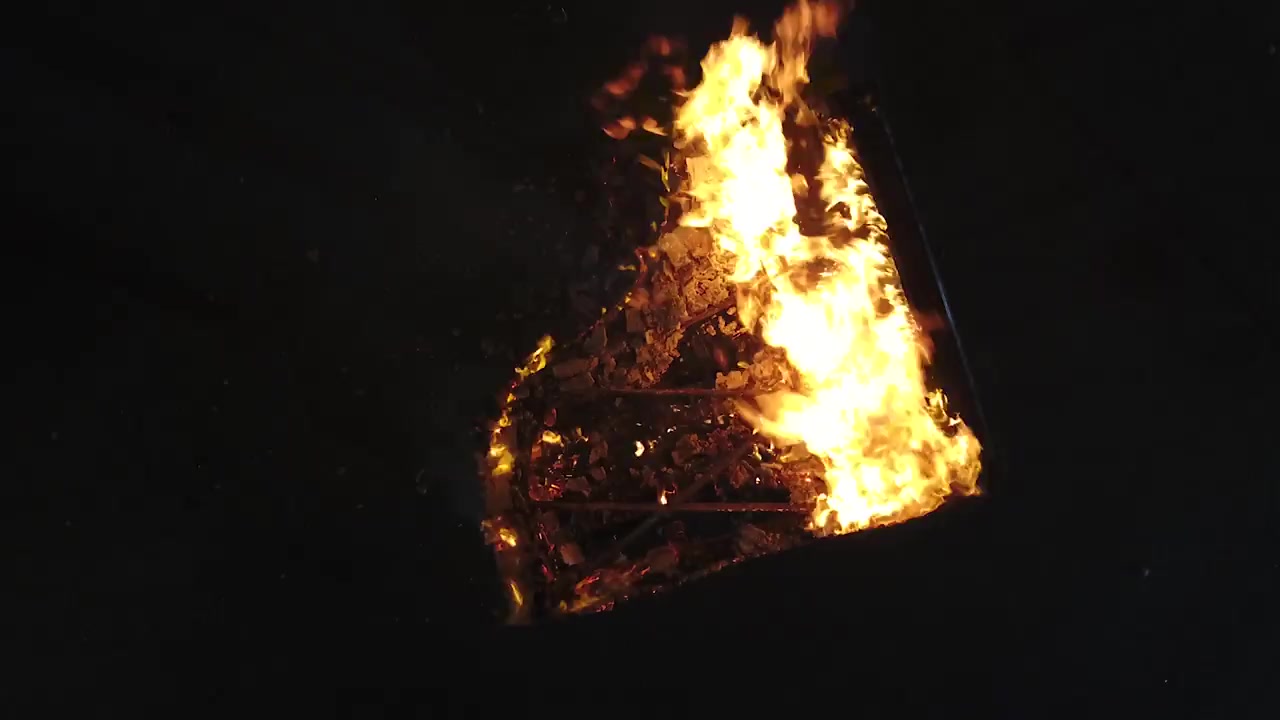
Grand illusion
You might ask yourself how the tones from the baby grand could have resonated so majestically among the Norwegian mountains? How such an ancient piano could still sound so warm and mellow after having been drowned in a dry dock?
It’s not polite to speak ill of those who no longer are among us, but the truth must be told: It wasn’t its beautiful sound, but rather its opulent curves, its aristocratic golden lettering and the fact that the baby grand was small enough to fit in a truck that brought the piano together with Leif Ove Andsnes himself. The baby grand was chosen exclusively for aesthetic reasons.
And in reality, the viewers never heard the sound of the baby grand. It was with other, larger, more expensive and finer grand pianos that Andsnes made the sound recordings. Because the baby grand didn’t sound good at all.
It sounded way below par, to be honest. And honesty is a good thing. The baby grand was what TV professionals call a playback piano.
If you look at the video below, and turn on the sound, you can hear what the piano actually sounded like up there on the mountaintop above Sørfjorden in Hardanger a decade ago. The music that went around the world was just a grand illusion. But you’ll also see that they had a pretty good time together, the old, perfectly ordinary baby grand and the incomparable pianist.

REVEALING THE TRUTH: The baby grand sounded impressive on TV. But it was all smoke and mirrors. This is what the perfectly ordinary baby grand really sounded like on the top of Rossnos in Odda.
Translator: Erik Grønvold



